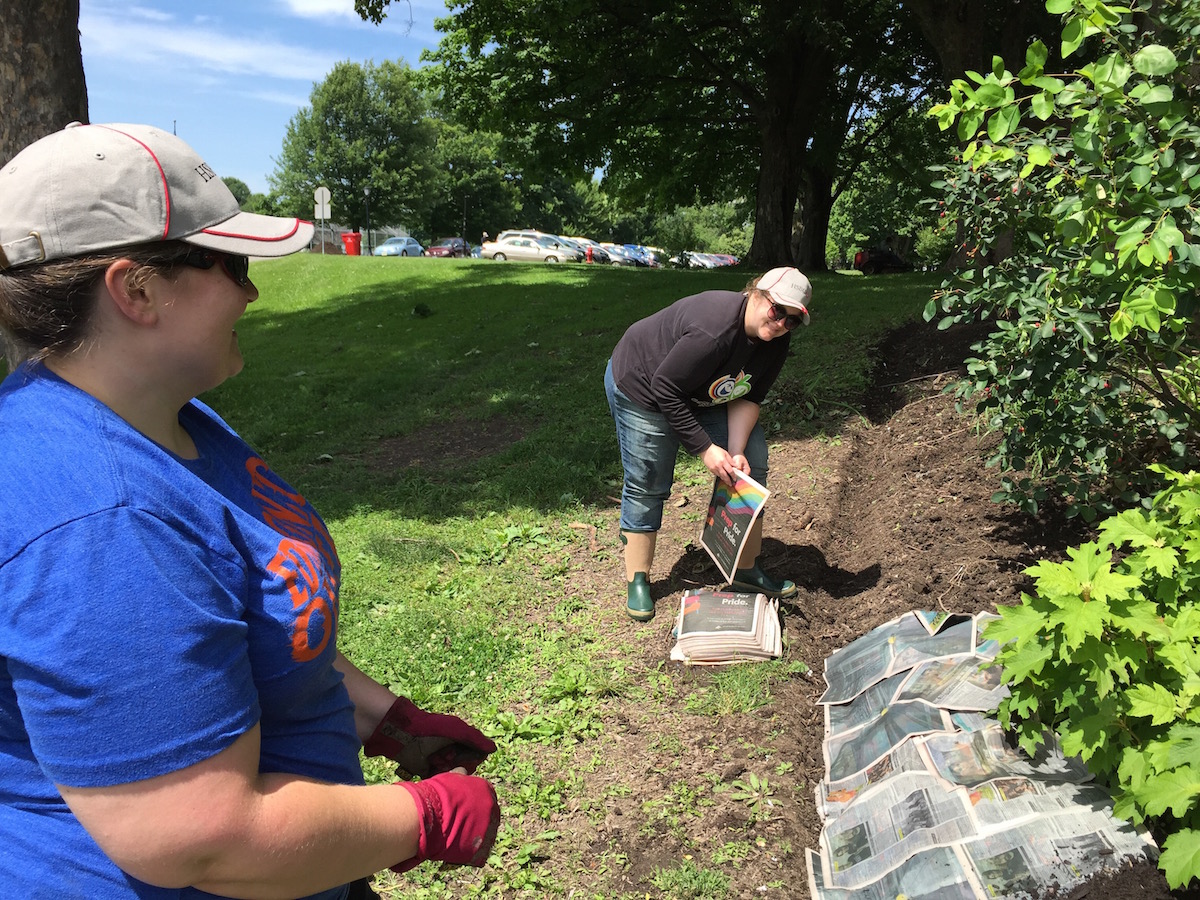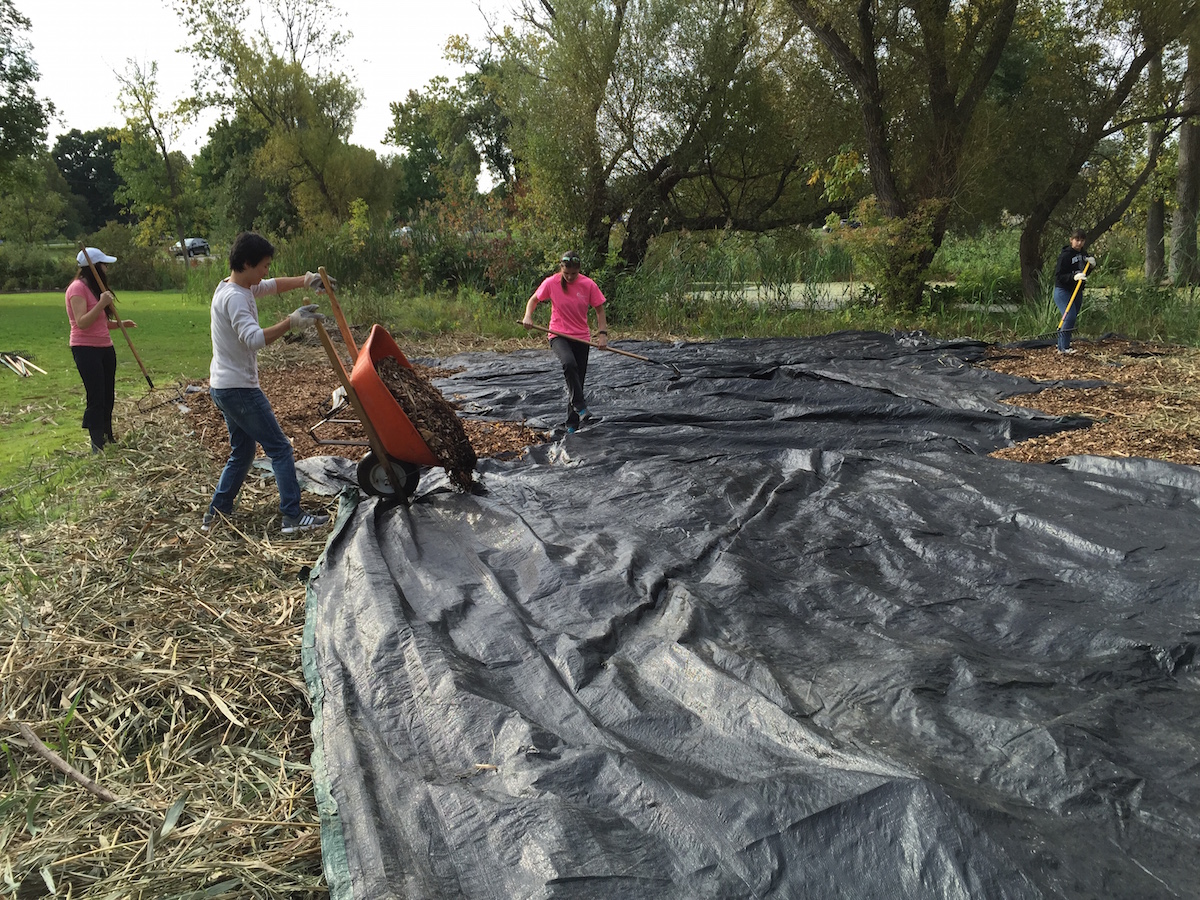Engaging methods that support the ecosystem to become healthier from roots up and inside out is key.
Management
The Buffalo Olmsted Parks Conservancy (BOPC) is utilizing alternative pesticide and traditional chemical fertilizers throughout its parks system. The BOPC has implemented integrated pest management to control insect pests, and invasive plants. One method we use is the application of Neem Oil to control insect diseases in roses. Neem Oil is a plant-based oil pressed from fruits and seeds of the Neem (Azadirirachta Indicia) tree, an evergreen native to India. Neem is used as a bio-pesticide for organic farming. It helps to repel numerous pests including mealy worm, aphids, thrips, whiteflies, mites, fungus gnats, beetles, leaf miners, caterpillars, and Japanese beetles. The Conservancy strived to utilize the least toxic and most effective methods of control. For a complete list of invasive pests visit: http://www.dec.ny.gov/docs/lands_forests_pdf/islist.pdf
Invasive Plants
BOPC uses multiple methods to clear our beautiful gardens and park spaces of invasive plants. As an alternative to spraying harmful chemicals that could potentially leak into our water system and have an adverse effect on the ecosystem, we sometimes smother them. One method that is effective is the use of uncirculated newspapers to cover the invaded area. We then cover the newspapers with mulch or repurposed woodchips, effectively eliminating air and sunlight to the undesired plant. In large areas we will bring in up-cycled tarps and pool covers. This eliminates at least two basic elements that plants, invasive or not, need to survive. Manual removal is also used extensively. For a complete list of invasive plants visit the NYS DEC’s list of invasive plants: http://www.dec.ny.gov/docs/lands_forests_pdf/isprohibitedplants2.pdf
Fertilization (yes, we go organic!)
The BOPC is also utilizing organic fertilizers. One way in which we achieve this is through composting on site by turning our fall leaves into rich organic matter that is then used in plantings, mixed into the soil as well as used around established plants. We also turn our compost into compost tea, using it to water our gardens and flowerbeds, eliminating the need for chemical fertilizers.
Additionally, we employ the use of beneficial bacteria. By introducing “Subculture M” (Fungi Mycorrhiza) and “Subculture B” which is a probiotic inoculum these subcultures colonize the host plants roots. This creates a network that increases the plant’s capacity to absorb more water and nutrients; such as phosphorus, copper and zinc.
Compost and beneficial bacteria subcultures are mixed into the soil at the time of planting. So instead of stripping the soil of beneficial organisms’ bacteria and fungi, we are introducing them and amending the soil at the root zone. This process enhances growth, favors rapid development of roots and plants and creates a diverse microbial community beneficial for the plants health.
All of these methods applied together allow the ecosystem to become healthier from the roots up, and from the inside out.




